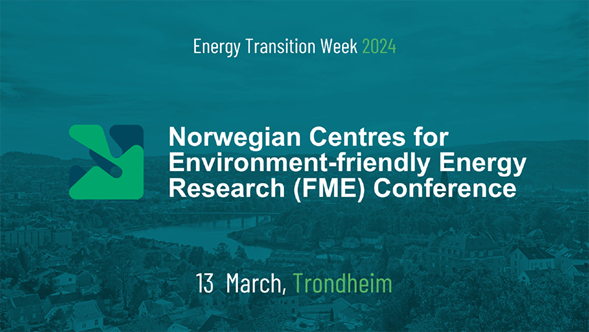Innovative Market Model for Wind Energy Flexibility Unveiled at the 2024 FME Conference
At the inaugural 2024 FME Conference—a collaborative event involving all Norwegian Centres for Environment-friendly Energy Research— pioneering research was presented by Ehsan Nokandi and Felipe van de Sande Araujo. Their paper, titled “PreFlex – A new Marketplace for Distributed Flexibility Providers Hedging Wind Producers in Intraday Power Markets,” introduces a novel market mechanism designed to enhance the stability and efficiency of wind power production.
Presented during session 2-A, “The Flexible Integrated Energy System: How does this look like and what will it take?”, the paper outlines the concept of the “Pre-contracting Flexibility Market” or “PreFlex.” This market aims to allow Wind Power Producers (WPPs) to hedge against the volatility and uncertainty inherent in renewable energy generation, particularly wind power. The PreFlex market facilitates transactions where WPPs can procure flexibility services from Distributed Energy Resources (DERs) via aggregators, thereby improving their ability to manage deviations encountered from day-ahead market commitments.
Using a two-stage stochastic optimization model, the study conducted a detailed analysis within the Norwegian power market context. The findings underscore significant benefits, notably a reduction in exposure to imbalance penalties and a decrease in risks related to intraday market illiquidity. The implementation of PreFlex could reduce median system imbalances and the costs associated with maintaining balancing reserves, though the latter not significantly as reserves are still needed to manage peak imbalances.
The paper emphasized that the PreFlex market considerably mitigates the financial risks for WPPs, slashing the balancing costs by about 19%. This cost efficiency is partly due to the fact that the contracted flexibility is activated only 38.7% to 56.3% of the time, showing that while the market provides substantial protective measures for WPPs, it remains cost-effective.
The presentation concluded with suggestions for future research, particularly the potential for market designs that would allow for sequential trading of DER flexibility across different markets. This would potentially increase the efficiency and utilization of available flexibility, further optimizing the energy system.
This insightful research at the FME Conference highlights significant advancements in integrating renewable energy sources into the power grid, ensuring a more stable and sustainable energy future for Norway.

